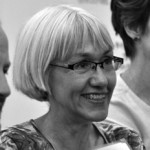
While the climate is changing, the global population is aging. These may seem like two very different trends, and yet, at the intersection of these changes is an interesting field of exploration for urban designers and planners.
As part of the Harvard Center for Green Buildings and Cities’ faculty research grant program, Ann Forsyth and Jennifer Molinsky immersed themselves in this field, investigating how settings could help or hinder well-being.
“A lot of work has focused on individuals, or on larger policies, but less has examined what we call ‘settings’ – the home, neighborhood, and urban or rural context,” said Ann Forsyth, Ruth and Frank Stanton Professor of Urban Planning. With Jennifer Molinsky, Project Director of the Housing an Aging Society Program at the Joint Center for Housing Studies of Harvard University, she explored how settings can either help people manage change related to the environment and aging or make change more difficult to manage.
“There are three sets of changes happening at once, making the situation quite complex. People are aging, which has implications for health, income, mobility, social networks, and interests. The climate is changing in ways that are hard to predict. Finally, environments are not static. Houses need repair and maintenance. Neighborhoods evolve as different groups move in and out, and at a more regional level, available services may change,” Forsyth said.
But where do these areas of research intersect? Through their research, the team discovered important connections between older people, places, and climate change that will fuel their ongoing research agenda.
“An older person may become more sensitive to heat due to aging, while the climate is getting hotter, and they live in a home that was not designed for that level of heat. While they may be able to make adjustments like adding air conditioning, that might be beyond their ability to manage or pay for,” said Forsyth. “Similarly, they may have moved into a neighborhood and made friends, only to have those friends pass away or move into supportive accommodation, meaning that the social networks they have relied on to help manage extreme events like floods or heatwaves may no longer be around.”
In their subsequent research publication, Molinsky and Forsyth also outline how the diversity of older people, climate problems, and settings complicate the issue. For example, older people come from different generations, climate changes can take the form of droughts, floods, or heatwaves, and an older person renting a high-rise apartment will have a completely different experience from someone who lives in a mobile home.
From this work, Forsyth and Molinsky developed a thorough agenda that will inform policy and planning efforts. With the diversity of the issue, there is still a variety of research to be explored.
“This project has been a good way to connect the Joint Center for Housing Studies to the wider Harvard Graduate School of Design,” said Forsyth. “I appreciate the support of the Center for Green Buildings and Cities in helping us explore this emerging issue.”
For more information about this project, read the full publication and check out the related article.
